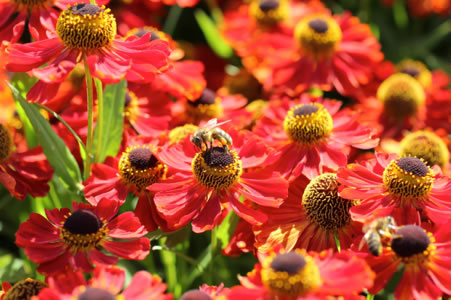Profile of Laura Jones

- Name
- Laura Jones
- Position
- Phd Student
- bsp801@bangor.ac.uk
- Phone
- Location
- Molecular Ecology and Evolution at Bangor
School of Natural Sciences
ECW Building, 3rd Floor,
Deiniol Road, Bangor, Gwynedd, LL57 2UW, UK
Project Title
Understanding the foraging preferences of honey bees, to ensure healthy colonies for honey production and pollination services
Project Summary
Honey bees contribute both directly and indirectly to humans; through honey and wax, and as a pollinator of both wild and crop plants. The increased rate of loss of honey bee colonies has caused worldwide concern.
The interacting effects of habitat loss and fragmentation, agrochemicals, pests and diseases, and climate change have resulted in declines in both honey bees and wild pollinators. Knowing the habitat and foraging requirements of honey bees is required to fully understand these declines and supply conservation guidelines.
Detailed analyses of which plants honey bees forage on throughout the season, and why, is lacking within the scientific literature. This is not surprising, as it requires an ability to determine exactly which plants the honey bees are using, compared to the plants in flower at the time.
The National Botanic Garden of Wales provides a unique study environment in which to answer these questions. It contains over 8,000 taxa of flowering plants, providing a hyperdiverse choice of native and non-native plant species for honey bees to choose from.
DNA metabarcoding provides a tool for identifying the pollen in honey, and so the plants the honey bees are utilising. By combining this DNA data with ground surveys that record all plants in bloom within each flowerbed at different times throughout the year, we can start to build a temporal and spatial picture of honey bee foraging.

Publications
de Vere, N., Jones, L.E., Gilmore, T., Moscrop, J., Lowe, A., Smith, D., Hegarty, M.J., Creer, S. and Ford, C.R. 2017. Using DNA metabarcoding to investigate honey bee foraging reveals limited flower use despite high floral availability. Scientific Reports 7, Article number: 42838. doi:10.1038/srep42838
